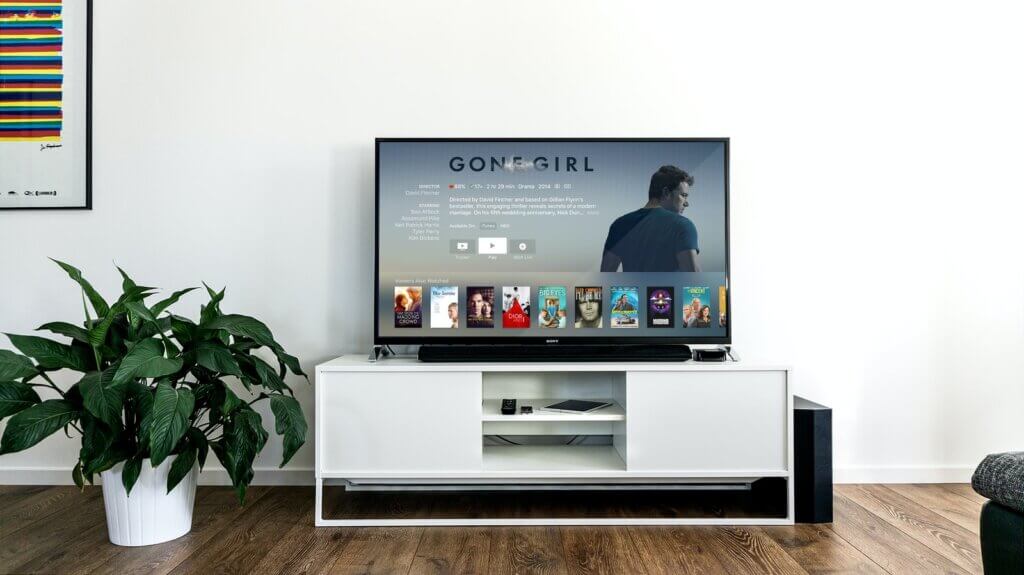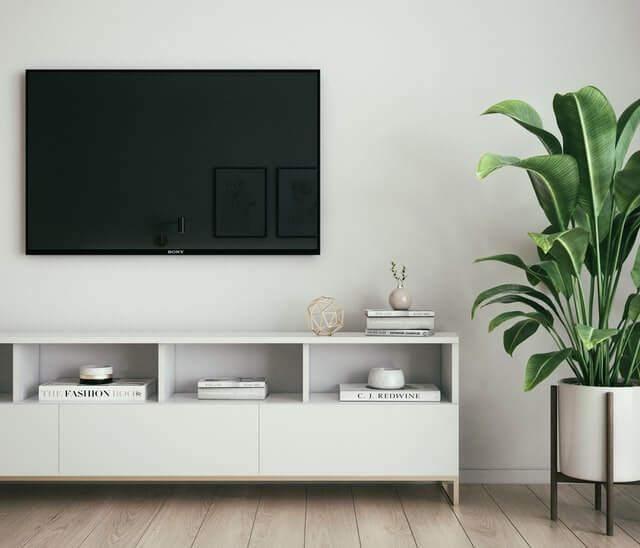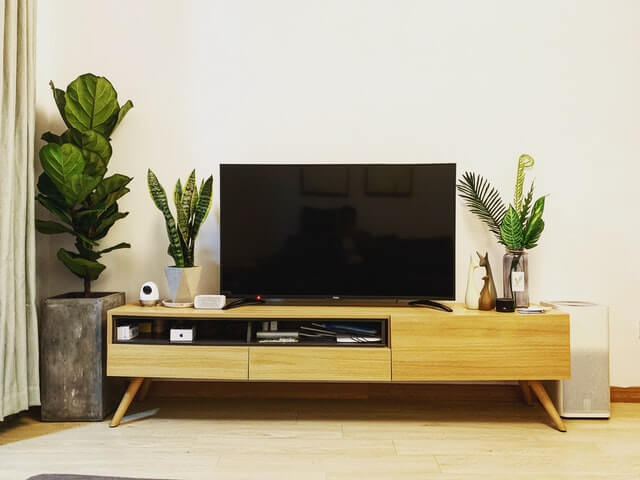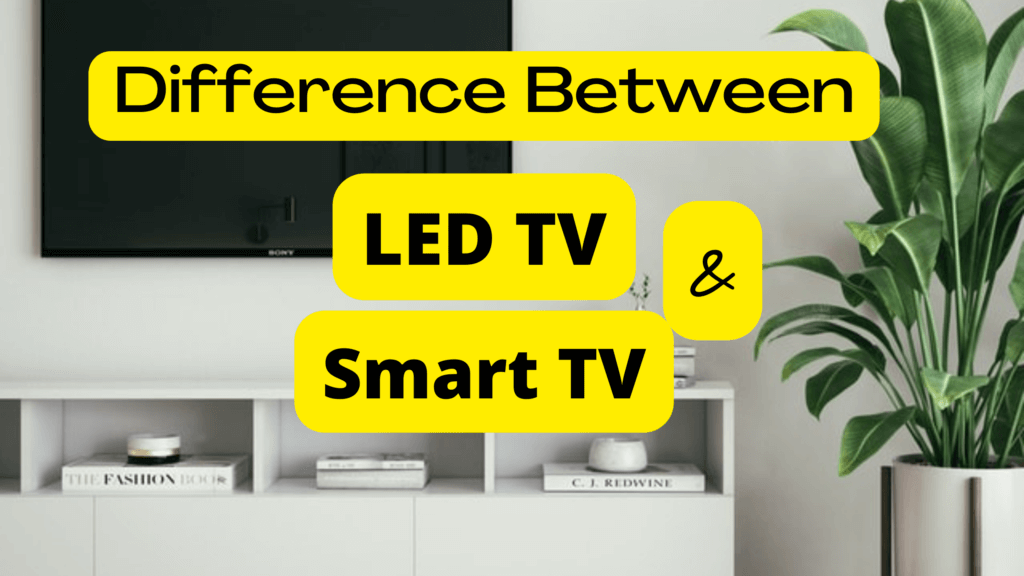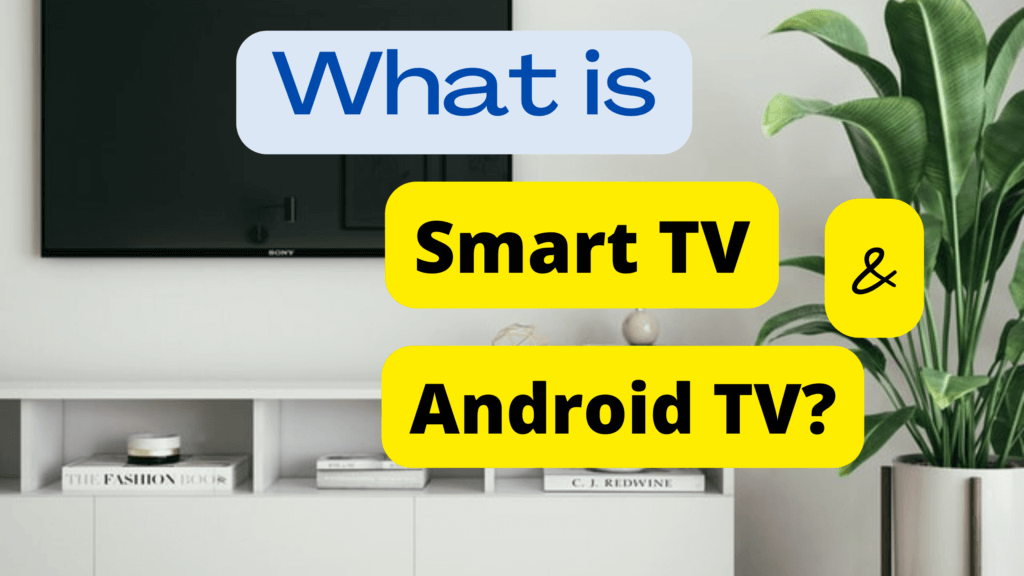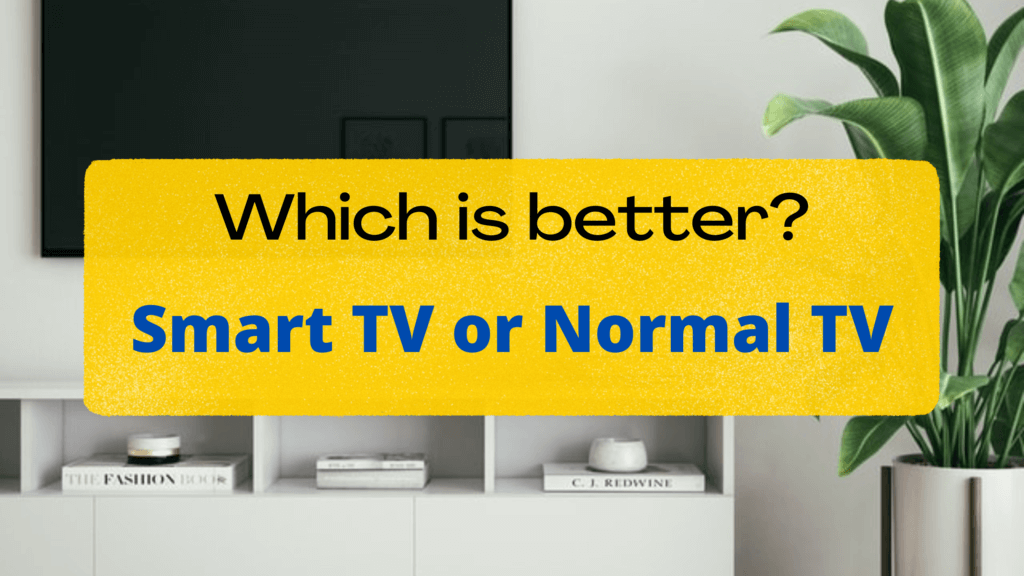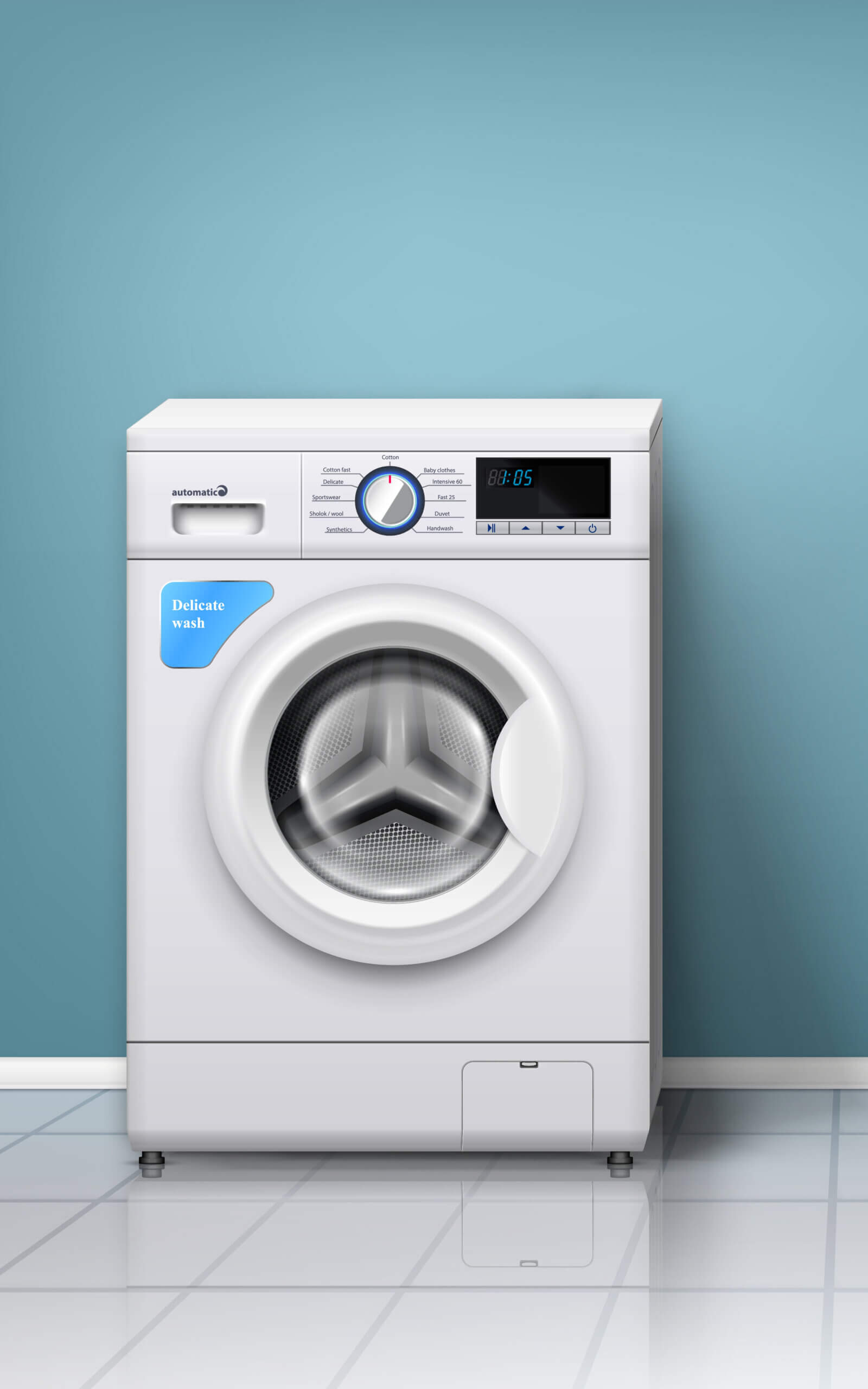Are you planning to buy a new television? The endless options can make your search rather difficult and time-consuming. One of the aspects that you may want to understand is Which is Better – Smart TV or LED TV?
We’ll take you, step-by-step, through many important terms that you must know to make a well-informed purchase. 😊👍🛒
Here we go! 🚀
What is the meaning of a Smart TV?
A smart TV is a TV that can connect to the Internet, allowing you to stream content from services like Netflix, SonyLiv, Amazon Prime Video, and others.
A Smart TV has a built-in operating system (OS) that allows you to access apps and services on the TV.
Smart TVs run on one of the different operating systems (OS) like Android OS, Google OS, Fire OS, webOS, Tizen OS, etc.
Smart TVs are also known as “connected TVs” or “Web-connected TVs.”
The term ‘smart’ is used in the sense that these TVs are capable of running apps that can be downloaded from an app store.
It’s a new way of viewing television that’s quickly becoming the norm in most households.
The idea behind a smart TV is that it can connect to the web, allowing you to access online content directly on your television screen rather than having to use a separate device such as a computer or tablet.
Over the years, Smart TVs have become increasingly popular as they offer more features than regular televisions such as voice control and web browsing capabilities.
What is LED TV?
What does LED stand for in TVs?
LED stands for Light Emitting Diode.
So, LED TVs are flat panel televisions that use energy-efficient LED backlights to illuminate their screens.
In other words, LED is a type of display technology that uses these semiconductor diodes to produce light.
Generally, an LED TV has a better contrast ratio and color reproduction.
LED TVs are now widely available as they’ve become more affordable and reliable over time.
Which is Better – Smart TV or LED TV?
It isn’t fair to compare Smart TVs with LED TVs. These are two different concepts. Comparing them is like comparing apples to oranges.
If you recollect, a Smart TV is one that has a built-in operating system (OS) and the ability to connect to the internet.
But, a Standard (or non-smart) TV doesn’t have a built-in OS. You need to connect it to some external device like a set-top box to watch the content.
It’s worth noting here that the availability of a built-in operating system (OS) and the ability to connect to the internet are essential features for a TV to be regarded as a ‘Smart TV’.
On the other hand, LED refers to the display (or backlight) technology of the TV.
LED TV and Smart TV are two distinct concepts. They don’t compete with each other; rather they work together to enhance your TV using experience.
The former is the source of light on your TV’s screen (to create the picture) and the latter indicates the presence of a built-in operating system that lets it access and install a wide variety of apps by connecting to the internet.
👉 An LED TV can be a Smart or a standard (non-Smart) TV.
👉 Similarly, a Smart TV can be an LED TV or one having some other display technology like OLED that doesn’t have backlights.
Just for your information, the OLED TVs display the image by using millions of individually-lit pixels.
In conclusion, Smart TV and LED TV are two different technologies.
✔ They don’t compete; instead, they complement each other.
✔ Hence, it isn’t fair to compare them.
However, a Smart TV – whether LED, OLED, or QLED – is a better option compared to a normal LED TV.
This is because it lets you enjoy the content from various OTT platforms without any external device. It also gives you access to a lot many additional advantages, to boost your overall experience.
Top 10 Smart LED & Android TVs
| Top 10 TV | Screen Size (inches) | Resolution | Operating System | Best Deal on Amazon | Overall Score | Model |
|---|---|---|---|---|---|---|
| MI Smart LED TV | 32 | HD Ready | Android | Price | 4.9/5 | 5A Pro |
| LG Smart LED TV | 32 | HD Ready | WebOS | Price | 4.8/5 | 32LM563BPTC |
| MI Smart LED TV | 43 | 4K Ultra HD | Android | Price | 4.9/5 | 5X |
| Samsung Smart LED TV | 32 | HD Ready | Tizen OS | Price | 4.8/5 | T4340 |
| Redmi Smart LED TV | 32 | HD Ready | Android | Price | 4.9/5 | L32M6-RA/L32M7-RA |
| Redmi 4K Smart LED TV | 43 | 4K Ultra HD | Android | Price | 4.9/5 | X43 |
| OnePlus Smart LED TV | 32 | HD Ready | Android | Price | 4.9/5 | Y1 |
| OnePlus Smart LED TV | 43 | Full HD | Android | Price | 4.9/5 | Y1S |
| Redmi Smart LED TV | 50 | 4K Ultra HD | Android | Price | 4.9/5 | X50 |
| Sony Bravia 4K Smart LED TV | 55 | 4K Ultra HD | Google TV | Price | 5.0/5 | X74K |
✅ More Resources To Help You!
What is use of Smart TV?
The Smart TV app store has been around for quite some time now, and it has become quite popular. You get the Smart TV app store installed on your Smart TV to use the apps and watch movies and play games.
But what are the uses of Smart TV? Here are some of them:
Stream Video Content
Watching content from various OTT platforms like Netflix, Disney+ Hotstar, Amazon Prime Video, SonyLiv, Zee5, YouTube, and many more is one of the most popular reasons why people buy a Smart TV.
You can download apps that stream movies and shows directly onto your TV screens.
This is convenient because you don’t have to connect any external device to your TV.
Video Games
Another widespread use of Smart TVs is playing video games on them.
Most modern televisions have built-in game consoles and controllers so you can play games right off your TV screen!
You can even use keyboards or cameras if you want to play more complicated games that require these input devices.
Streaming Music
There are plenty of streaming music services available through Smart TVs, so you can listen to your favorite songs without having to connect any gadgets or wires!
Most Smart TVs offer fantastic audio quality so you don’t have to worry about buying additional audio equipment either!
Connect Multiple Devices
The best thing about Smart TVs is that they allow you to connect with other devices.
So, you can connect your smart devices such as laptops, tablets, and smartphones through WiFi connection, Bluetooth technology, and even screen mirroring.
Access Social Media Apps
Smart TVs allow you to connect with people from all over the world by using apps like WhatsApp and Facebook Messenger.
Some models even have cameras that allow you to video chat with your friends and family members using Skype or Google Hangouts!
Moreover, you also have the option to connect a camera externally to your Smart TV and catch up with your buddies.
Browse the Web
Using Smart TVs you can even browse the internet.
Many of them come with preloaded browsers.
Some like Android TVs give you access to Google Playstore so you can download your favorite browser and explore the web conveniently.
Work from Home
Work from home is the new normal.
Some models of Smart TVs let use your TV as a Personal Computer (PC) to work from the cloud on presentations, Excel, and Word documents and even remotely access your office computer.
LED TV features and benefits
LED TVs have many features and benefits that make them stand out as one of the best technologies on the market today. Key features include:
High contrast ratio
LED TVs have a better contrast ratio.
This means that you’ll get deeper blacks and brighter whites on LED TVs.
LED TVs offer high contrast ratios which provide deep blacks, vivid colors, and crisp images.
Thinner Panels
LED TVs are thinner than other types of televisions because they don’t need as much space for backlighting.
Moreover, this also results in less reflection off the screen.
Glare-free view experience
LEDs have less glare as compared to the older version of screen displays.
Wide viewing angles
LED TVs have wide viewing angles, allowing you to watch the TV from any location in the room without compromising on the picture quality.
Energy efficiency
LED TVs are more energy efficient than other types of televisions because they use less power to produce the same brightness.
As a result, you can save money on your electricity bills by using an LED TV instead of older types of displays such as CRT or plasma screens.
Low maintenance
Unlike older types of televisions such as CRT and plasma displays, which require regular cleaning due to dust build-up over time, LEDs do not require much cleaning.
✅ DON’T MISS OUR HANDPICKED RECOMMENDATION
Top 10 Smart & Android TVs
| Top 10 TV | Screen Size | Resolution | Operating System | Model | Overall Score |
|---|---|---|---|---|---|
| MI Smart LED TV | 32 | HD Ready | Android | 4A PRO | 4.9/5 |
| LG Smart LED TV | 32 | HD Ready | WebOS | 32LM563BPTC | 4.8/5 |
| MI Smart LED TV | 43 | 4K Ultra HD | Android | 4X | 4.9/5 |
| Samsung Smart LED TV | 32 | HD Ready | Tizen OS | T4340 | 4.8/5 |
| MI Smart LED TV | 43 | Full HD | Android | 4A | 4.9/5 |
| MI Smart LED TV | 40 | Full HD | Android | 4A | 4.9/5 |
| OnePlus Smart LED TV | 32 | HD Ready | Android | Y1 | 4.9/5 |
| MI Smart LED TV | 50 | 4K Ultra HD | Android | 4X | 4.9/5 |
| Redmi Smart LED TV | 50 | 4K Ultra HD | Android | X50 | 4.9/5 |
| TCL Smart LED TV | 40 | Full HD | Certified Android | S6500 | 4.7/5 |
✅ More Resources To Help You!
Frequently Asked Questions (FAQ)
Yes, most Smart LED TVs that are available on the market today can connect to Wi-Fi.
2. What is the difference between LED HD TV?
LED TV is a type of TV that uses light-emitting diodes to backlight the liquid crystal display (LCD).
HD TV stands for high-definition television, which means it has a higher resolution than standard definition televisions (SDTV).
HD TV has a high enough resolution so that it can show images at 720 pixels (height) and 1280 pixels (width).
So both LED and HD in a TV are two distinct concepts that cannot be compared.
Rather, both these aspects work together to produce more comprehensive and brilliant image outputs on your TV.
3. Smart TV vs Android TV – Which is Better?
A smart TV is a television set with an embedded operating system like Android OS, Google OS, Fire OS, webOS, Tizen OS, etc.
Android TV is a Smart TV that runs on the Android operating system.
‘Smart TV’ is a much wide term that is used to denote all internet-connected TVs irrespective of the operating systems they use.
And ‘Android TV’ is a part (subset) of the wider ‘Smart TV’ market.
Hence, it isn’t fair to compare them.
However, a Smart TV is better than a Standard (non-Smart) TV as it comes with a built-in operating system and offers many ‘smart’ features.
You can read the dedicated article explaining this here.
TRENDING NOW
POPULAR POSTS
- What is an Inverter Refrigerator?
- Where is the Freezer in Side by Side Refrigerator?
- Best Convertible Side By Side Refrigerator
- Best Side By Side Refrigerator Under 60000
- Midea Side By Side Refrigerator Review
- Difference Between 4 Star and 5 Star Refrigerator
- Difference Between Direct Cool And Frost Free
- What is Star Rating in Refrigerator? Know Everything!
- What is the difference between Single Door and Double Door Refrigerator?
- Advantages and Disadvantages of Double Door Refrigerator
- Advantages and Disadvantages of Single Door Refrigerator
YOU MAY ALSO LIKE TO READ
- What Is RPM in a Washing Machine?
- Why Front Load Washing Machines Are Expensive?
- How to Clean a Top Loader Washing Machine?
- How to Clean an LG Front Loading Washing Machine?
- What is Front Load Washing Machine?
- What is Anti-Tangle in Bosch Washing Machine?
- Do Impeller Washers Tangle Clothes?
- What Is Pulsator in Washing Machine?
- What is Cradle Wash in IFB Washing Machine?
- How To Load a Front Load Washing Machine?
- Best Semi Automatic Washing Machine in India
- Best Front Load Washing Machine in India 2023
- Best Impeller Top Load Washer in India 2023
- How Much Water does Front Load Washing Machine Use?
- How to use Front Load Washing Machine? India 2023
- Front Load Washing Machine Buying Guide – India – 2023
- Which Washing Machine is better – Semi or Fully Automatic in 2025?
- How to Select Washing Machine Capacity in 2023?
- Pros and Cons of Top Load and Front Load Washing Machines India 2023
- Difference between Top Load and Front Load – India (2023)?





